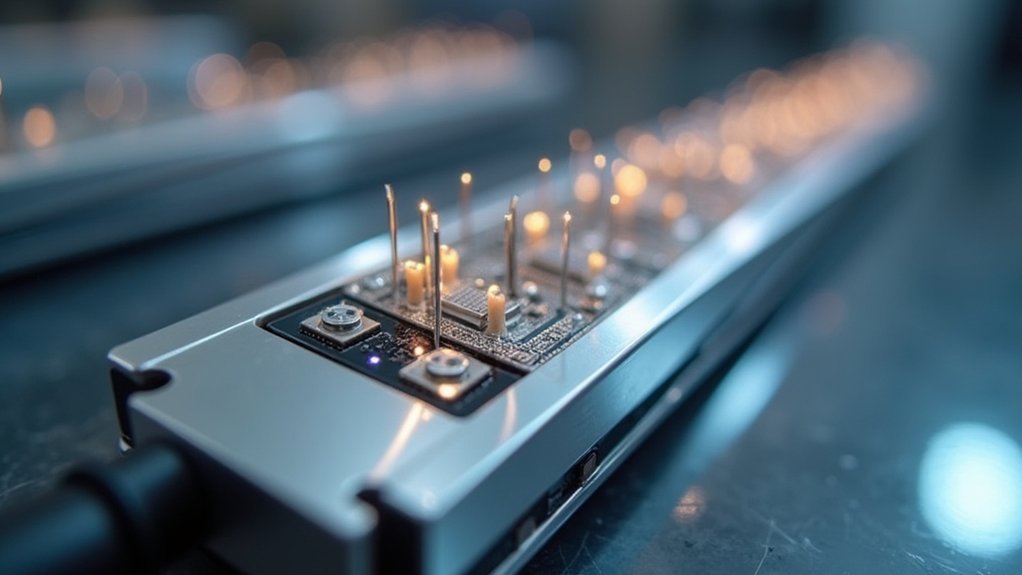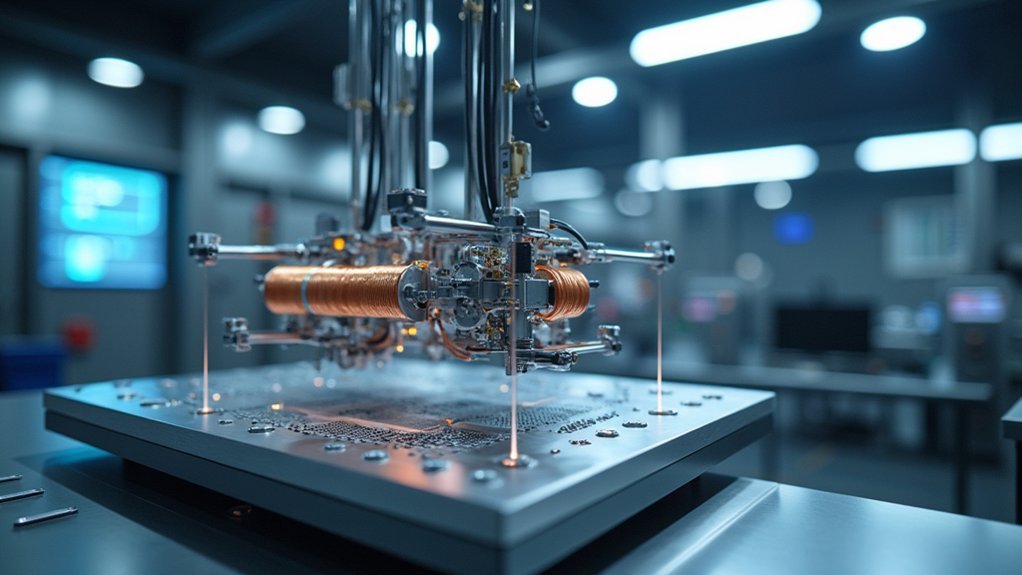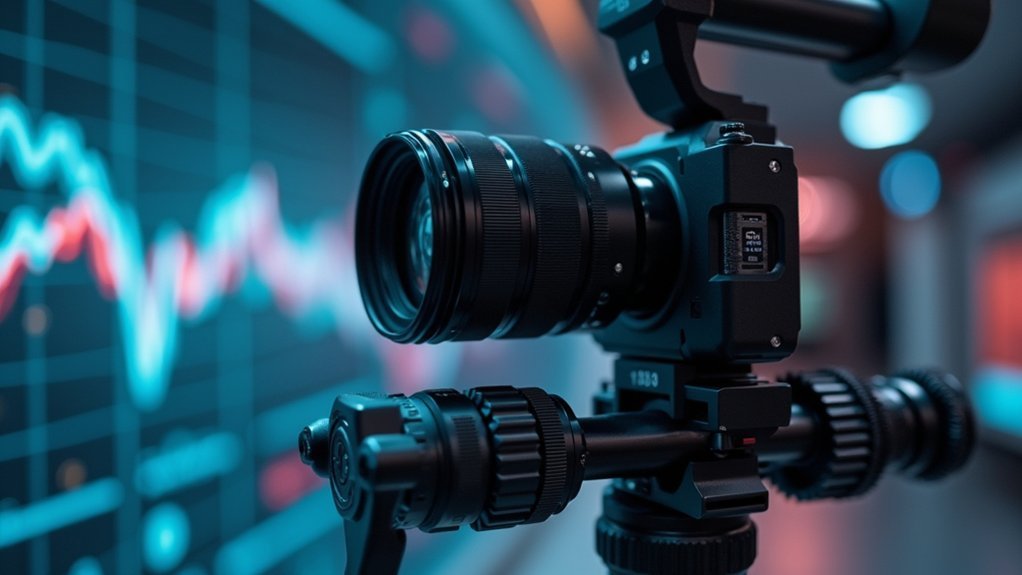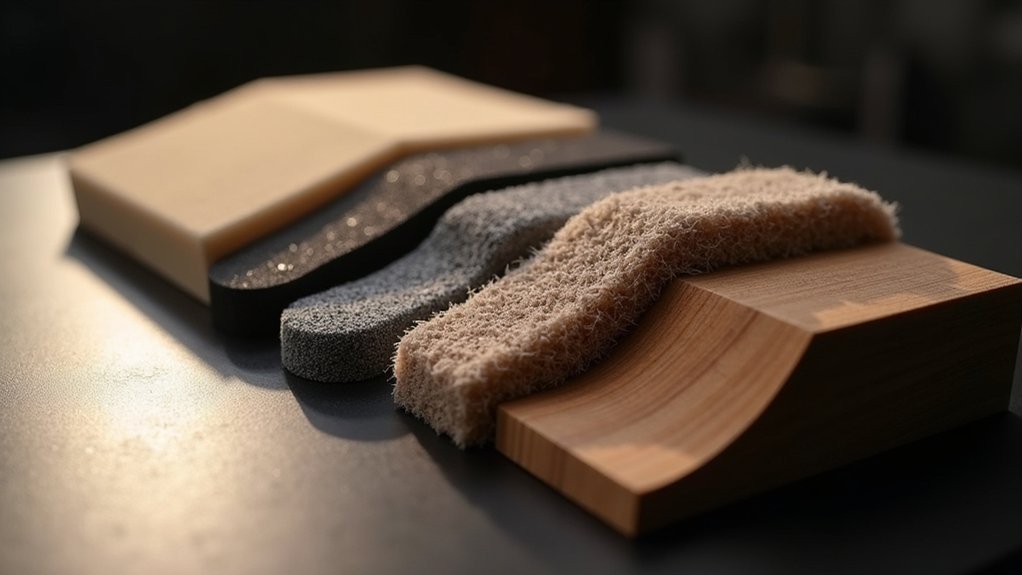To achieve sharp microscopy images, you’ll need effective stage damping. The top five methods include piezoelectric systems with microsecond response times, fluid-based dampeners with adjustable viscosity, electromagnetic damping technology for active control, elastomeric materials that absorb unwanted energy, and digital compensation algorithms that adjust focus in real-time. Each approach greatly reduces vibration, eliminates focus drift, and enhances imaging clarity. Discover how these technologies can transform your imaging results from blurry to brilliantly detailed.
Piezoelectric Damping Systems for Vibration Control

When precision imaging demands absolute stability, piezoelectric damping systems deliver remarkable performance by converting mechanical vibrations into electrical signals.
You’ll benefit from their microsecond response times, ensuring real-time focus adjustments that counteract unwanted movements during critical live-cell observations.
By incorporating these sophisticated systems with high-precision stages, you can achieve sub-micrometer positioning accuracy that dramatically enhances your imaging clarity.
The impressive 90% reduction in vibration amplitude effectively minimizes focus drift, maintaining stability throughout dynamic imaging processes.
Your cellular observations will gain significant fidelity with piezoelectric damping systems in place.
This technology allows you to capture previously unattainable detail in cellular events, transforming your microscopy results from merely acceptable to truly exceptional.
Fluid-Based Dampeners: Viscous Solutions for Stage Stability
Fluid-based dampeners provide a complementary approach to vibration control that works alongside piezoelectric systems in advanced microscopy setups. You’ll find these systems particularly valuable during live-cell imaging, where maintaining precise focus is critical.
The effectiveness of fluid-based dampeners lies in their ability to dissipate energy from external disturbances, minimizing focus drift caused by mechanical or environmental factors.
| Aspect | Benefit |
|---|---|
| Adjustable viscosity | Customizable damping response |
| Energy dissipation | Reduced vibration transmission |
| Stability enhancement | Sharper imaging results |
| Precision improvement | Better optical measurements |
| Maintenance needs | Consistent performance over time |
Remember to monitor your dampener’s viscosity regularly to maintain ideal performance. By integrating fluid-based dampeners into your microscopy stage, you’ll achieve greatly improved stability for capturing dynamic cellular processes with exceptional clarity.
Advanced Electromagnetic Dampening Technology

Unlike mechanical approaches, electromagnetic damping systems represent a notable leap forward in vibration control for microscopy applications.
You’ll find that these systems utilize electromagnetic forces to actively counteract vibrations, providing superior control compared to traditional methods.
Advanced electromagnetic damping technology considerably reduces resonance effects, eliminating oscillations that blur images during live-cell studies.
Electromagnetic damping technology eliminates the image-blurring oscillations that typically compromise critical live-cell microscopy studies.
You can fine-tune these dampeners to specific frequencies, enhancing their effectiveness in maintaining image clarity.
When you integrate electromagnetic dampeners with piezoelectric stages, you’ll achieve rapid, precise focus adjustments in real-time—essential for capturing dynamic cellular processes.
This combination delivers consistent focus even during extended imaging sessions.
The improved stability translates directly to clearer images and more reproducible results, ultimately enhancing the quality of your scientific data collection.
Elastomeric Materials and Their Role in Resonance Reduction
Elastomeric materials represent a critical breakthrough in vibration management for modern imaging systems. You’ll find these flexible polymers excel at absorbing unwanted energy that can blur your live-cell microscopy results.
By incorporating elastomeric mounts into your setup, you’re effectively lowering the system’s natural frequency, shifting it away from problematic resonance zones.
What makes elastomeric materials particularly valuable for your imaging work:
- They greatly reduce oscillation amplitude, directly enhancing image stability and sharpness
- You can customize their stiffness and damping properties to match your specific microscopy applications
- They improve focus stability during observation of dynamic biological processes
The adaptability of these materials allows you to optimize your stage design for maximum vibration isolation, resulting in clearer images and more precise observations.
Digital Compensation Algorithms for Real-Time Stability

Digital compensation algorithms represent the next frontier in achieving pristine imaging stability. They enhance your live-cell microscopy by continuously adjusting focus based on detected drift and environmental changes.
Digital compensation algorithms dynamically stabilize your imaging by responding to environmental fluctuations in real-time, elevating live-cell microscopy precision.
You’ll notice immediate improvements as these algorithms utilize feedback mechanisms to correct for focus issues caused by temperature fluctuations and mechanical vibrations.
The most advanced implementations leverage machine learning to predict and preemptively adjust focus based on prior drift patterns. You can considerably reduce time spent on manual refocusing when you integrate focus stabilization algorithms during imaging sessions.
For ideal results, combine regular system calibration with digital compensation algorithms. This pairing leads to reduced focus drift and enhanced reproducibility of your experimental results, ensuring you capture the cellular dynamics you’re studying with unprecedented clarity.
Frequently Asked Questions
How Do Temperature Fluctuations Affect Damping System Performance?
Temperature fluctuations can reduce your damping system’s effectiveness as materials expand or contract, changing their vibration absorption properties. You’ll notice decreased performance when thermal changes alter stiffness and damping coefficients.
What Maintenance Schedule Optimizes Damper Longevity?
To optimize your damper longevity, inspect rubber components quarterly, replace fluid annually, check seals bimonthly, and conduct full system testing every six months. Don’t wait for failure—preventative maintenance prevents costly downtime.
Can Damping Systems Be Retrofitted to Existing Imaging Equipment?
Yes, you can retrofit damping systems to your existing imaging equipment. You’ll need to identify vibration sources, select compatible dampers, and guarantee proper installation. It’s cost-effective compared to replacing entire systems.
How Do Weight Limitations Impact Damping Method Selection?
You’ll need to contemplate weight limits when choosing damping methods. Heavier solutions like solid granite bases require sturdy supports, while lightweight options such as pneumatic isolators work better for equipment with weight restrictions.
Which Damping Methods Perform Best in Portable Field Applications?
For portable field applications, you’ll find elastomeric pads and mechanical isolation systems work best. They’re lightweight, require no power, and effectively absorb vibrations while being easy to transport and quickly set up.
In Summary
When you’ve implemented these five damping methods, you’ll notice a dramatic improvement in your imaging quality. Don’t underestimate how piezoelectric systems, fluid dampeners, electromagnetic technology, elastomeric materials, and digital algorithms work together to eliminate vibration. They’re your best tools for achieving crystal-clear results, even in challenging environments. Remember, effective stage stability isn’t just about equipment—it’s about choosing the right combination of techniques for your specific imaging needs.





Leave a Reply